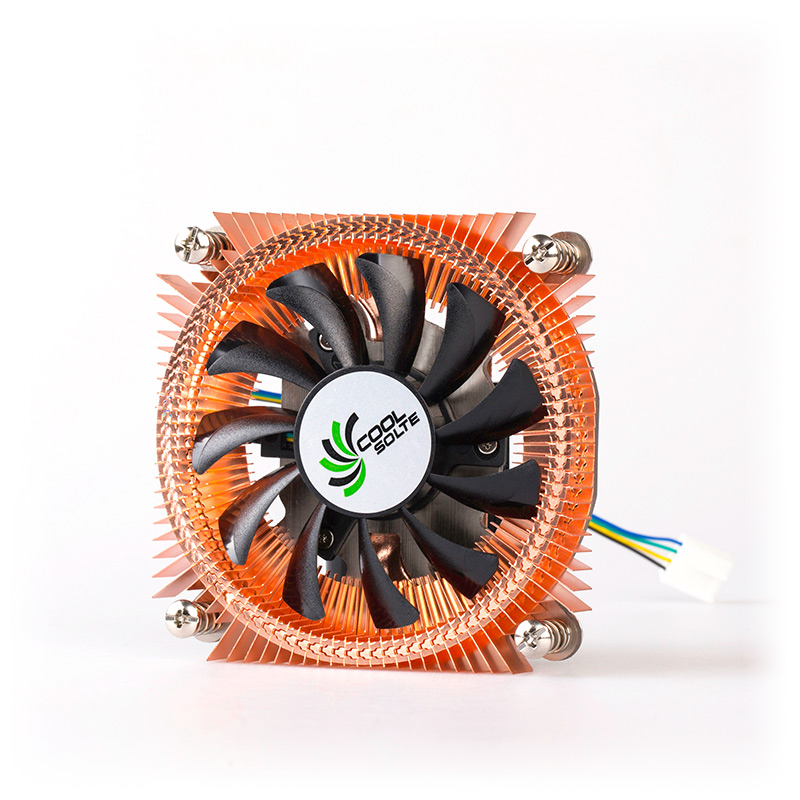

Views: 11 Author: Site Editor Publish Time: 2022-11-25 Origin: Site
Forced air cooling is widely used in the power electronics industry due to the presence of a large number of power components in this industry. Due to the characteristics of the products in this industry and their primary application environments, axial fans are widely used when the cooling method of forced cooling is chosen for power modules or systems. Because the working principle of the axial flow fan is through the motor work, drive its connected blade to rotate at the speed given by the motor to produce a specific pressure difference in front of and behind the blade, drive the air along the motor shaft around the blade. The direction of movement. Therefore, the axial flow fan has the characteristics of a low-pressure head and high flow rate. Usually, people the choose an axial fan only consider the above characteristics and ignore the rotation of the axial fan blades on the forced flow of air caused by a series of impacts. The fluid flowing through the axial fan does not move in one direction along the motor shaft but also has a velocity motion component in the fan blade cross-section perpendicular to the motor shaft. Therefore, the fluid driven by the axial fan flows on the motor shaft in a positive direction.

The fluid passing through the outlet of the axial fan flows forward along the axis, so what effect does the actual direction of rotation of the fan have on the flow field behind it (the cooling area inside the power supply)? In this paper, we use Mentor Graphics' FloTHERM electronic device thermal design simulation software to study this problem in conjunction with a practical example of our product to determine the relationship between the fan rotation direction and the flow field at the outlet and to give a practical application of the future process. How to avoid or exploit this relationship.
Simulation analysis model
With this model, we recalculated the two models by adjusting the direction of rotation of the axial fan (spin direction: clockwise or counterclockwise) without changing the engagement of the models. After convergence of the calculation, by comparing the changes in the internal flow field of the module and the cross-sectional distribution of the temperature field in both cases, the effect of the different rotational directions of the fan on the heat dissipation of the whole module is explained.
Analysis of simulation results and conclusion
Comparing the above two results, it can be seen that the fan's rotation direction greatly influences the distribution of the internal flow field and temperature field of the module. From the viewpoint of the flow field, since the rectifier bridge part of the model is relatively small in size and the PFC heat sink part is relatively high, in this case, the rotation direction of the fan has a very significant impact on the flow field. When the fan rotates clockwise, the eddy currents around the rectifier bridge heat sink are small, and the flow field is relatively smooth, which is conducive to the heat dissipation of the rectifier bridge heat sink. However, when the fan rotates counterclockwise, there are many vortices around the rectifier bridge heat sink, which is not conducive to the heat dissipation of the rectifier bridge heat sink. Of course, these differences can be further confirmed.
By carefully observing the flow field animation of the fan in different rotation directions, it can be seen that the fan rotation direction affects the subsequent flow field distribution because the fan's rotation direction determines the flow direction of the fluid flow in a specific direction. The spiral shape at the fan exit. . Therefore, we should make full use of this phenomenon in practical applications and try to avoid layouts that are not conducive to the heat dissipation of key power components or power components with high losses inside the module to ensure the rationality and reliability of the layout. Thermal design.
Summarizing the relevant data provided by the fan supplier, we can get the following simple method to determine the impact of the fan rotation direction on the flow field: According to the left rotation principle, the direction of the thumb is the direction of the macro flow fluid, and the bending direction of the other four fingers is the direction of rotation of the flow field at the fan outlet. In the layout of the power components, according to the left-hand spiral principle, the adverse effects on component heat dissipation due to the direction of rotation can be avoided entirely by simply aligning the critical components along the direction of the four bent thumbs.
Of course, the above analysis only applies to axial flow fans used for forced air cooling. In the case of exhaust cooling, the fan's direction of rotation does not affect the heat dissipation inside the module because the change in the fan outlet flow field does not affect the air inlet.
Cololsolte specializes in the production of CPU heatsinks. Each of our products has been rigorously tested to have high-quality cooling capabilities. There are also different targeted products for different cooling needs, as well as providing custom solutions; if you require a custom CPU heatsink, welcome to contact us.